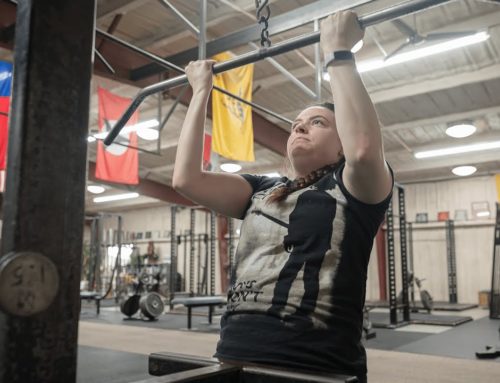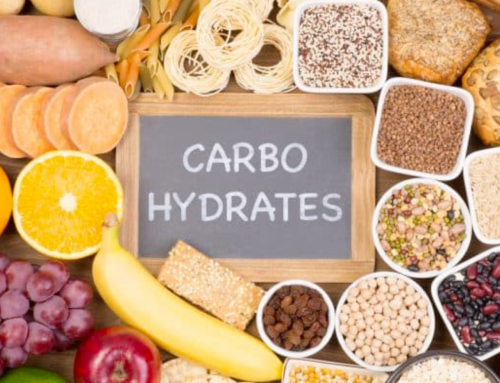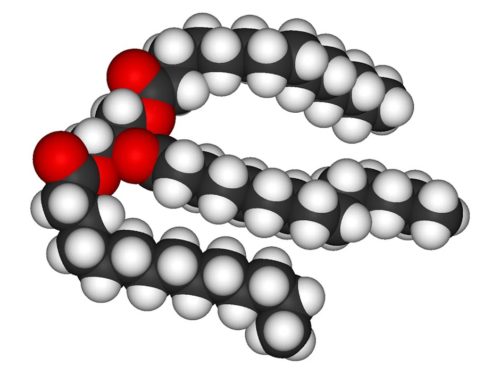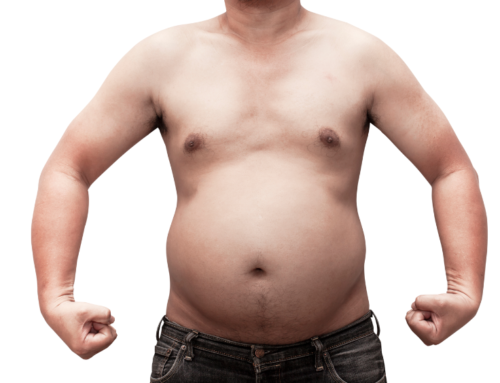by Robert Santana, MS, RD, SSC, CSCS
Nutrition is a very important factor in training of all types. Whether you are under the barbell, running a marathon, or simply riding a bicycle to work daily, fueling the human body is an essential activity of daily life. Like most things in life, a clear and simple analysis exists. Understanding both what needs to be done as well as the rationale for why it needs to be done is equally important for educating future clients and practitioners alike.
Energy
The word “energy” comes from the Greek enérgeia. Throughout several centuries this term has been used to describe various concepts in both physics and biology. In thermodynamics, heat energy is a form of energy transferred from one system to another as a result of thermal interactions. The standard measure of heat energy is a calorie. The word calorie originates from the Latin word calor, which means heat. A calorie is the amount of heat necessary to raise the temperature of 1 gram of water 1 degree Celsius. In bioenergetics, the common notation is the kilocalorie, which is expressed as Calorie (with a capital C) on nutritional labels. For the rest of this paper, we will just call them “calories.”
Now that the history lesson is out of the way, let’s discuss the role of calories in human nutrition. Humans expend energy, and thus consume calories from nutrition, as a function of living. In other words, calories are burned without doing anything other than staying alive. Most of the energy expended by a human is the result of basic vital functions such as breathing, heart and brain function, kidney and liver function, etc. This accounts for ~60% of total daily energy expenditure (TDEE) and is a concept that is often overlooked. Energy is also expended as a function of digesting and absorbing nutrients. This is called the thermic effect of food. In other words, eating food burns calories and this process accounts for ~15% of TDEE. The remaining ~25% of the energy expenditure pie is attributed to the factor most people are familiar with: physical activity.
In the world of professional research, physical activity and exercise are two different things. For our purposes, we refer to all human movement as physical activity, since that’s all it is. For a professional athlete who trains several hours per day, training accounts for a larger piece of the pie. Michael Phelps consumed ~8000–10,000 calories to effectively train as an elite swimmer, whereas an untrained male couch potato may only need 1800 calories because his physical activity slice of the pie is not quite as high. A male or female barbell trainee that trains for 1–3 hours per day will lie somewhere in the middle.
Energy Balance
Energy balance refers to the relationship between energy intake and energy expenditure. The decision about where to tilt this balance will depend on the goals and demands of the individual. For our purposes, this decision will be to increase muscular strength, as measured by one-, two-, three-, or five- repetition maximum (1RM, 2RM, 3RM, or 5RM). Increases in muscular strength are facilitated by the central nervous system and increases in muscle mass. The contribution of the former tapers off as the lifter becomes more experienced, with long-term strength acquisition dictated by increases in muscular bodyweight. Anabolism refers to the building of larger molecules from smaller ones. Muscle anabolism refers to the increase in the number of contractile proteins, which results in muscle hypertrophy (the enlargement of the muscle fibers). This is a chronic adaptation to progressive barbell training. However, muscle anabolism also depends on maintaining a positive energy balance. Thus, a human must consume more calories than are being expended to promote muscle growth. The excess calories function to provide sufficient energy to complete the prescribed training sessions and also to facilitate the recovery from the prescribed training sessions. This is especially true in novice lifters since they are at a stage in their advancement where muscle hypertrophy and strength acquisition take place at a faster rate than during intermediate and advanced stages of training. The net result of this process is an increase in total bodyweight.
The discussion is not complete without addressing the accumulation of adipose tissue that also occurs while in a positive energy balance. In an anabolic environment both fat and muscle are deposited simultaneously and the two are inextricably related. The increase in bodyweight can be skewed towards muscle mass or it can be skewed towards fat mass. However, one cannot be accumulated without the other. This is a concept both the professional researchers and practitioners agree upon.
A disclaimer: it must be stressed that we are not in the business of bodybuilding. Our job as strength coaches is to maximize performance under the bar, while minimizing the risk of negative health consequences. We are not promoting morbid obesity, but when we discuss the skewing of weight gain towards muscle mass, that does not mean that we want our trainees to plan their training and diet to preserve visible abs. Most strong lifters with visible abs most likely displayed visible abs at baseline or are taking performance enhancing drugs that allow them to maintain an artificially low fat mass.
Visible abs are not the norm, and if you are not in this demographic naturally, artificially lowering or maintaining your bodyfat percentage in the single digits will not facilitate strength gains, and will likely result in months or years of wasted training time. Maximizing muscle, while maintaining low levels of bodyfat falls into the business of bodybuilding and physique competition. That is not the purpose of the information presented on this website, and if this version of aesthetics is your primary goal, then you have come to the wrong place.
Measurement of Energy Expenditure
So how do we know how much we need? Since energy expenditure can be measured, it is important to discuss how this is done to address relevant inquiry. There are numerous equations and calculators available that have their own set of assumptions and tend to be impractical and often inaccurate. There is also the option of using sophisticated instrumentation to measure energy expenditure. This discussion would be incomplete without an explanation of these methods.
The “gold standard” for measuring energy expenditure is direct calorimetry. Direct calorimetry is based on the principle that 1 calorie is the amount of heat necessary to increase 1 gram of water 1 degree Celsius. This is measured by constructing a room that is surrounded by pipes containing water. The temperature of the water in those pipes is known and measured. The change in water temperature in response to the presence of a human or animal can be used to determine energy expenditure. This is obviously costly and there are very few direct calorimeters available worldwide. Therefore, indirect methods have been developed to address these issues.
Indirect calorimetry measures energy expenditure by collecting expired air and analyzing the oxygen (O2) and carbon dioxide (CO2) content using a gas analyzer. The gas analyzer also samples room air and using known quantities of O2 and CO2 in room air, the volume of oxygen consumed (VO2) and volume of CO2 produced (VCO2) can be measured. When a human expends calories, the human body utilizes O2 and produces CO2. The main sources of calories for humans are fats, carbohydrates, and proteins. The number of calories released from the consumption of oxygen differs depending on the source of the calories. However, since carbohydrate and fat are the primary the nutrient sources, or “energy substrates,” they are the two that are examined for these purposes.
The energy released from carbohydrate and fat within the body approximates 4.0 and 9.0 kcal/g of substrate. Thus, fat is a denser source of energy than carbohydrate. However, we are not concerned with the amount of energy available from a given amount of energy substrate, rather we are concerned with the caloric availability in relation to oxygen consumption. For pure carbohydrate and fat catabolism (breakdown), these caloric amounts are actually 5.05 and 4.73 Kcal/LO2, respectively. Thus, humans burn ~5 kcal/LO2 (liters of O2) to provide quick math. This exact figure will depend on the substrate utilization (see below). This method works well for measuring resting and steady state energy expenditure (more on this below). However, it does not accurately measure energy expenditure during the performance of barbell exercises.
Energy Expenditure During Training
If we were interested in measuring energy expenditure during training and wanted to measure it as accurately as possible, we would have clients squat, bench press, deadlift, press, and chin inside a direct calorimeter and measure the amount of heat expended during the training session. This would provide a pretty good number for us. However, this is neither feasible or necessary. Others have had individuals train while connected to an indirect calorimeter. This methodology works quite well for steady state aerobic exercise. However, outside of this context, the accuracy is limited by the underlying assumption of the design of the instrument.
Steady state aerobic exercise is defined as continuous submaximal exercise (i.e. cycling, running) that results in a VO2 that remains consistently within 150 ml/min per measured interval. This is the first assumption of indirect calorimetry. Second, it assumes that the VO2 is equal to the difference between the volumes of inspired and expired oxygen. Similarly, it is also assumed that VCO2 by the body is equal to the difference between the volumes of expired and inspired carbon dioxide. Remember, the device measures expired gases and estimates inspired gases based on the quantity of gas in room air. In order to actually measure VO2, one would have to measure heart rate, stroke volume (volume of blood ejected by the heart in a single beat), and arterio-venous oxygen difference (a-vO2 difference – the difference in oxygen content in arterial blood and venous blood).
This would require the insertion of multiple catheters threaded into the heart to directly measure cardiac output (stroke volume x heart rate) and a-vO2 difference. This is neither necessary nor what is being done with an indirect calorimeter. The last assumption is in reference to the respiratory exchange ratio (RER) and respiratory quotient (RQ). The RQ and RER are the same mathematical expression (VCO2/VO2). However, RQ refers to the ratio of CO2 and O2 derived from cellular respiration whereas RER refers the ratio derived from expired air from the lungs. Thus, indirect calorimetry assumes that these values are equal. However, under certain circumstances the values may differ.
Now that all of this background information has been covered, let’s bring it into context. RER (or nonprotein RER) is used to tell us about substrate utilization, which refers to the ratio of calories expended from the utilization of carbohydrates versus fat. A RER of 0.70 is consistent with 100% of calories expended from fat and a RER of 1.0 is consistent with 100% of calories expended from carbohydrates. A thorough discussion of fat and carbohydrate needs will be covered elsewhere in another paper in this series, so this will be kept brief here.
The intensity of an activity has a linear relationship with the reliance on carbohydrate during that activity. This means that as training intensity increases, RER increases. In fact, it increases to a value beyond 1.0 with high intensity aerobic exercise. It also increases beyond 1.0 during resistance exercise (barbell exercises), which is why a discussion of RER is relevant here. During aerobic exercise, this happens because once an individual achieves an intensity of ~50-75% of VO2max several things occur. First, the rate of production of adenosine triphosphate (ATP) increases. ATP is our body’s “cellular currency,” and is produced primarily from carbohydrates and fats.
When ATP is produced, hydrogen ions are released. When hydrogen ions are released, the pH of the human body decreases. This causes a condition referred to as exercise-induced acidosis. The body’s response to this is to buffer the hydrogen ions by releasing bicarbonate. The release of bicarbonate increases ventilation, which is why we hyperventilate during high intensity exercise. The hyperventilation leads to an increase in CO2 production, which leads to a RER > 1.0. At this point, exercise is no longer steady-state and thus energy expenditure and substrate utilization cannot be accurately computed. There are several important distinctions between squatting or deadlifting versus jogging or riding a bike. First, the relationship between VO2 and heart rate is linear during aerobic exercise and thus maximal heart rate can be effectively used to prescribe aerobic exercise intensity and calculate calories. Heart rate increases during aerobic exercise because there is an increase in venous return, which is an increase in the rate of blood flow to the heart. During resistance exercise, no such relationship exists. Elevations in heart rate during squats, deadlifts, bench presses, and presses are primarily driven by the release of adrenaline and noradrenaline. Venous return actually decreases while lifting because increases in intrathoracic pressure causes the intrathoracic veins to collapse, which during an exceptionally long repetition, could lead to syncope. This happens almost every time I perform a 1RM press. This is why heart rate is a poor proxy of energy expenditure during a lifting session.
Second, RER values during a typical lift often exceed 1.0 and since we do not breathe during the entire set, a continuous collection of air is not possible. Lastly, resistance exercise, by definition, is not steady state aerobic exercise. So, while energy expenditure can be estimated using the ~5 kcal/LO2 equation, it is important to understand the limitations to this as described above. Many equations have been “validated” to indirect calorimetry to estimate energy needs in various populations. Some of these more elaborate (Harris-Benedict, Mifflin St. Jeor) than others (kcals per kg). Although these do provide a rough approximation of where to start, they were not “validated” for trained populations. Therefore, we will not discuss them further and you are welcome to Google them should you choose to experiment with them on your own accord.
Calorie guidelines
Dietitians, strength and conditioning coaches, and professional researchers all agree on one thing: A caloric surplus must be achieved to facilitate improvements in performance and increases in muscular body weight. Like most things, there is biological variability in terms of how many calories should be consumed by any single individual. This means that some individuals will need fewer calories than others and vice versa. As a general guideline, female trainees and older adults will need fewer calories than young adult males. Taller individuals typically require more calories than shorter individuals, obese individuals need fewer calories than lean people. Many factors play into this, and it’s important not to overthink the guidelines.
Some simple starting points are necessary for everyone and one can scale up or down as needed. This is what professional dietitians and nutritionists do when starting a new client on a diet. Let’s start with the “average” young male and female and work down from there. The average male and female is 5’9” (176.1 cm) and 5’4” (161 cm). Experience has taught us that the average young male should consume a minimum of 3000 calories per day and the average young female should consume a minimum of 1800 calories per day as a maintenance-level caloric intake. For those interested in gaining muscular bodyweight, these numbers are 4000 and 2300.
Older adults (>55), shorter individuals (males <5’5”, females <5’0”) and obese individuals (untrained BMI >35.0) may need less than this. Taller individuals may need more than this. Additionally, as lifters advance in their training careers, acquire more muscle mass, train with heavier weights, higher training volumes, and greater frequency of training, the need for more calories follows. It is important to note that these numbers are not designed for the maintenance of visible abs, as discussed earlier.
Admittedly, we do not have a large meta-analysis of randomized control trials to support these numbers. But guess what? Neither do They. The vast majority of randomized control trials on dietary interventions are outpatient feeding trials that assess dietary nutrient intake based on self-reported dietary intake. Additionally, to date there are no randomized control trials that have investigated diet and training interactions that controlled for diet with inpatient feeding procedures. Therefore, an exact number that applies to all humans is not known. Therefore, like those in professional research, we have to rely on experience with self-reported intakes of clients we have trained over the last several decades.
The takeaway message is that these numbers are not absolute and should be scaled depending on individual response. If progress is being made and weight on the bar is increasing at a predictable rate, continue the same calories. If weight on the bar is stalling and the “three questions” have been answered correctly, then calories need to be scaled up. Many of these issues can be easily overcome by hiring a professional Registered Dietitian (RD) or nutrition coach who specializes in coaching strength athletes. Like barbell training, there is no substitute for the eye of a good coach. The above guidelines provide a feasible alternative that should be referenced and utilized whenever necessary.
A version of this article appeared in Starting Strength 09/05/2018





